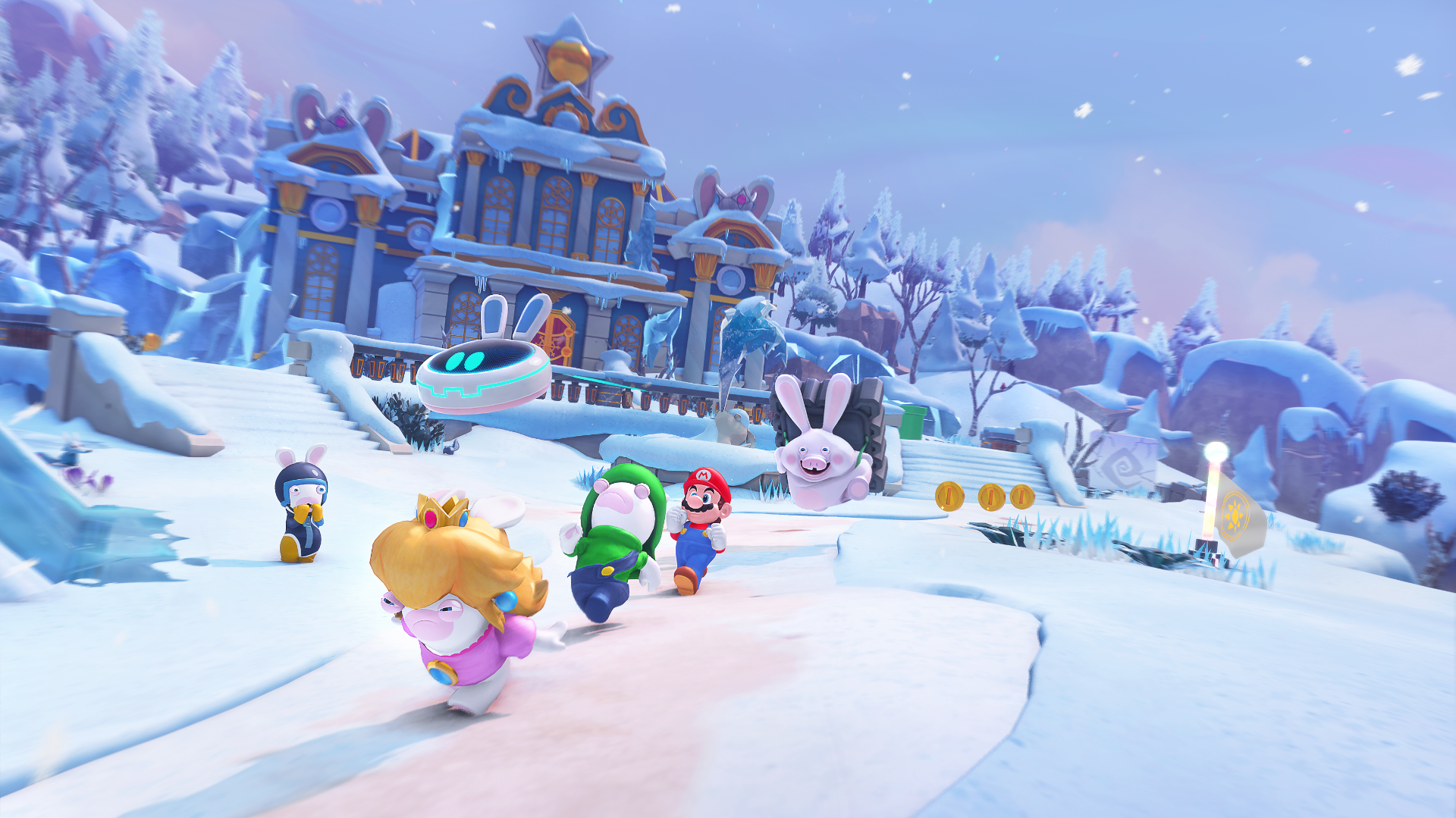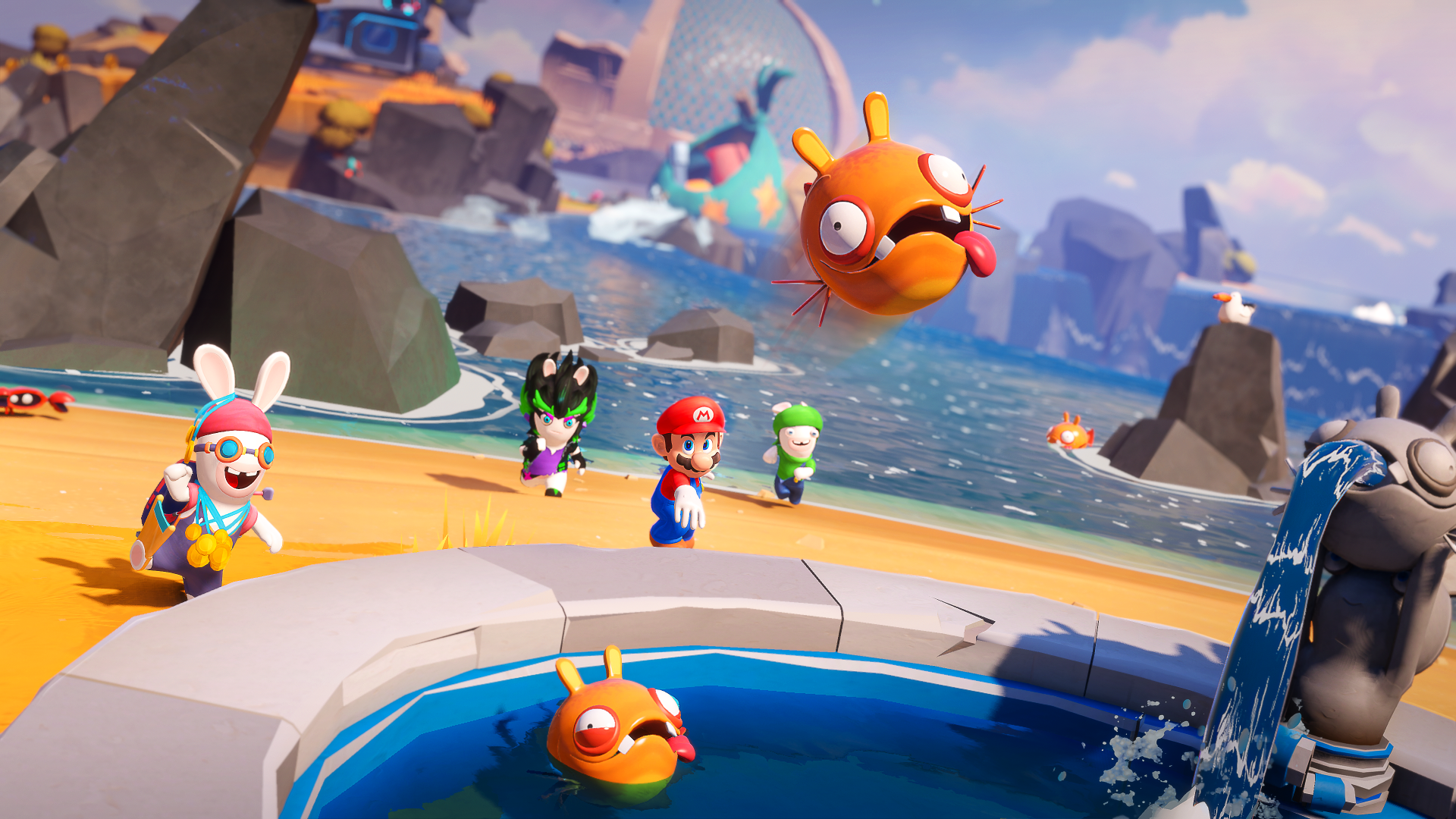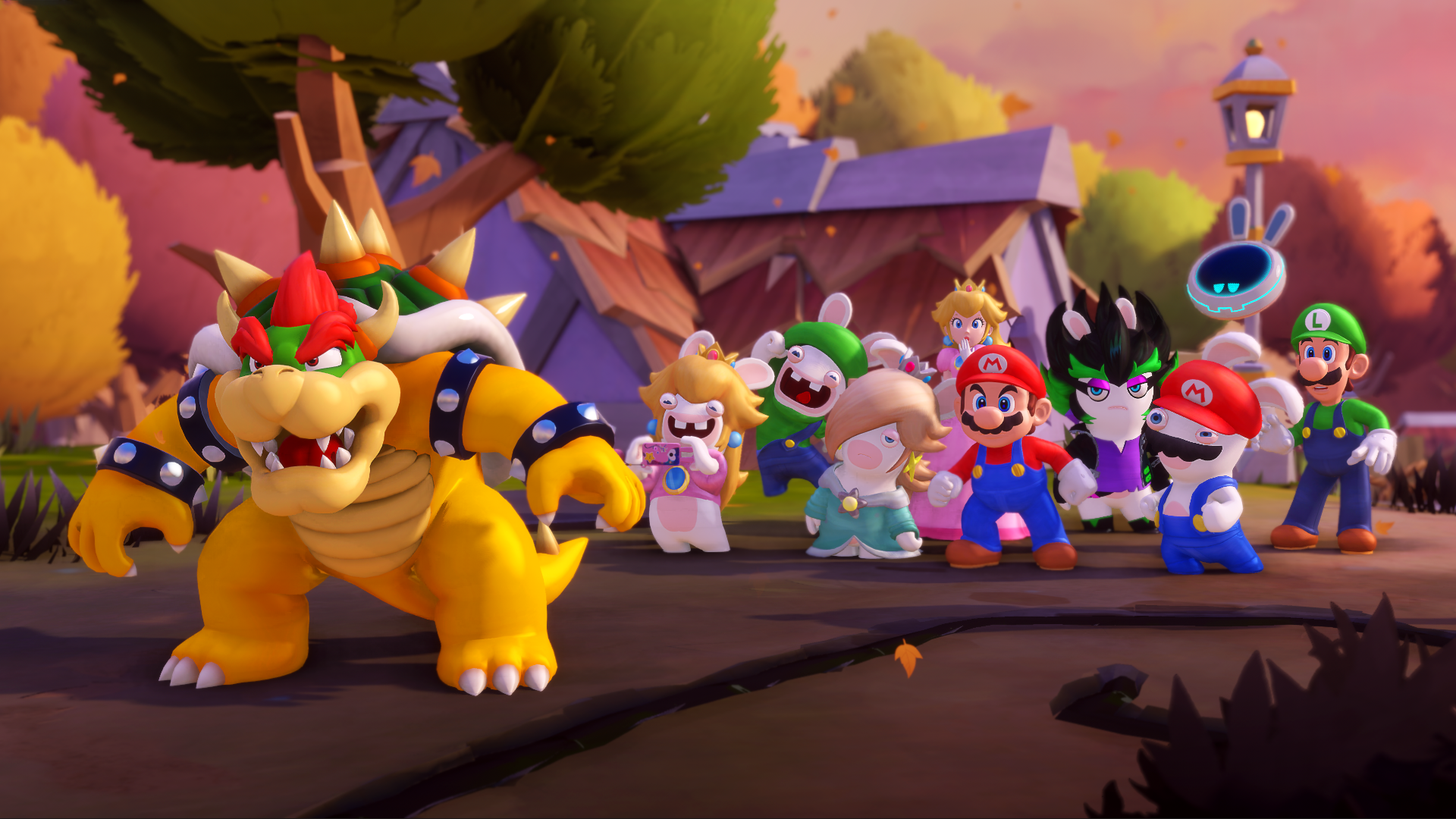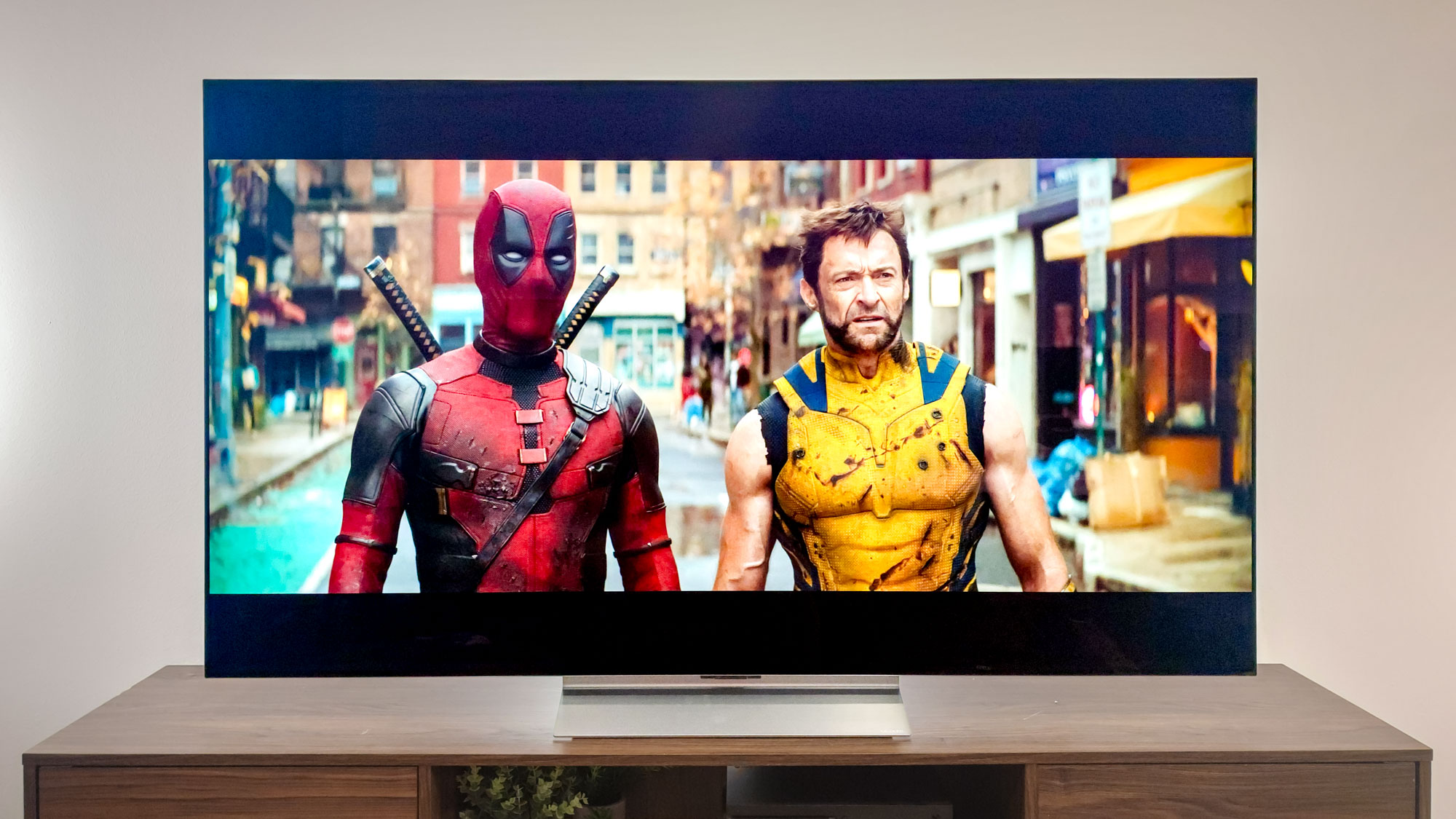Mario + Rabbids: Sparks of Hope preview: Mario’s strangest sequel
Mario + Rabbids: Sparks of Hope offers a few improvements over the original game

I still can’t quite explain how Mario + Rabbids: Sparks of Hope happened. By all rights, it’s a game that shouldn’t exist. Its predecessor, Mario + Rabbids: Kingdom Battle was a game no one asked for: a turn-based strategy adventure where Mario and co. team up with the Raving Rabbids — and everyone wields a gun.
And yet, against all odds, Kingdom Battle was a great game, and it was popular enough to warrant a sequel. Perhaps even more bizarre is that said sequel looks great.
I saw a hands-off demo of Mario + Rabbids: Sparks of Hope at a Nintendo press event in New York City, and I’m counting down the days until it debuts on October 20. Admittedly, I’m an easy sell for Sparks of Hope, as I’ve shouted from the rooftops for years that Kingdom Battle is one of the best Switch games you can buy ever since it debuted.
Even so, Sparks of Hope seems to have the same tight combat and slightly subversive comedy as the first game, along with a few welcome improvements.
Mario + Rabbids: Sparks of Hope: Combat improvements

First off, if you’re not familiar with the Mario + Rabbids concept, it’s an odd one. Instead of a platformer, like most Mario titles, or a party game, like most Rabbids titles, Mario + Rabbids is a turn-based strategy game with RPG elements. You recruit a party of Mario characters and their Rabbid lookalikes, then do battle with a variety of Rabbid foes. The strategic combat is one pillar of the game; exploring the overworld and solving environmental puzzles is another.
Right from the start of the demo, I could see that Sparks of Hope had made a few improvements over Kingdom Battle. The first, and most substantial, is that the game has ditched the battle grid. In Kingdom Battle, Mario and friends could traverse battle environments by moving from space to space on a clearly delineated grid. This was good for tactical purposes, but also felt a bit limiting, as your characters sometimes couldn’t move places that they should logically be able to go.
Instead, in Sparks of Hope, each character has a predefined movement range, which they can run around freely until they end their turn. As in the previous game, characters can still use one another as springboards for jumps, and they can crash into enemies to do melee damage in addition to regular attacks. The freeform movement system lets you be a little more creative with character positioning, though. I was also impressed by how characters could intelligently hide behind cover, as long as they ended their turn near nearby.
Sign up to get the BEST of Tom's Guide direct to your inbox.
Get instant access to breaking news, the hottest reviews, great deals and helpful tips.
I noticed a few other small tweaks. Mario can slide into enemies before fighting them to start the battle in a more advantageous position, and he can also hover across the battlefield after big jumps. But it wasn’t until we examined the Sparks themselves that I observed another big change.
As the title suggests, Mario and his party will come in contact with small beings called “Sparks” who can aid them in battle. There are 30 Sparks altogether, and each one confers a different ability on a party member — stronger attacks, better movement speed, inflicting status effects and so forth. By collecting star bits, you can empower your favorite Sparks, adding a level of customization that the first game didn’t have.
A more straightforward game

The other part of the Mario + Rabbids formula is overworld exploration, which hasn’t changed too much here. You’ll still guide Mario and friends through an isometric setting, collecting coins and solving puzzles as you go. In my demo, the setting in question was the Winter Palace — an icy fortress surrounded by snow, where the party squared off against a variety of wolflike enemies.
An Ubisoft representative told Tom’s Guide that the game won’t necessarily be easier than Kingdom Battle, but Sparks of Hope will feature more onboarding and less backtracking. A series of tutorials will ease players in, and a variety of difficulty settings — including a full invincibility mode — should accommodate players who aren’t as comfortable with turn-based strategy gameplay.
Similarly, while Kingdom Battle involved a lot of backtracking to complete the main story, Sparks of Hope will let players find most of an area’s hidden items on their first run. If they want to return later, they may find hidden Sparks or other useful gear, but the level design aims to balance exploration and progression a little better this time around.
It’s also worth discussing some of the new characters in the game. Mario, Luigi and Peach, as well as their Rabbid counterparts, will all return for Sparks of Hope. Later on, though, you can recruit Bowser, Rabbid Rosalina and Edge — an original character from Sparks of Hope, whose urban samurai aesthetic represents a pleasant contrast from Mario’s motley group.
Old-school Ubisoft plans may also be pleased to know that the game will offer three DLC packs, and one of them will add Michel Ancel’s Rayman as a playable character. The packs won’t necessarily be cheap, though. The standard game costs $60, whereas the Gold Edition, which entitles you to all of the downloadable content, will retail for $90.
Overall, we didn’t get too much time with Sparks of Hope. And without going hands-on, it’s difficult to tell how the game will feel to play. Still, it seems to have all the elements that made the original game work, plus a few smart improvements that should improve the overall flow.
We’ll have a full Mario + Rabbids: Sparks of Hope review closer to launch. In the meantime, fans of the original should keep an eye out — and those who haven’t played the original should give Kingdom Battle a try.
Now that the game is out, see how it fared in our full Mario + Rabbids: Sparks of Hope review.
Marshall Honorof is a senior editor for Tom's Guide, overseeing the site's coverage of gaming hardware and software. He comes from a science writing background, having studied paleomammalogy, biological anthropology, and the history of science and technology. After hours, you can find him practicing taekwondo or doing deep dives on classic sci-fi.

